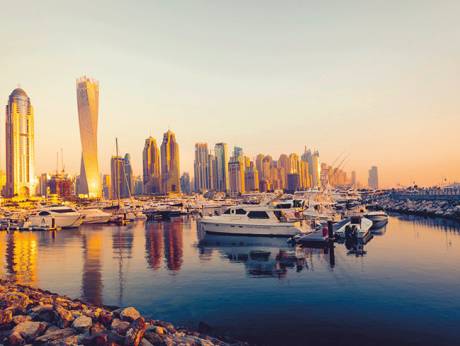Dubai’s residential real estate market has evolved significantly over the past few years with continued foreign investment from traditional investor nationalities and an ever-expanding spectrum of new source markets. However, one trend has been consistent over the last few years: the significant mismatch between actual deliveries compared to annual supply forecasts. Realisation rates, or the ratio of delivered units to announced units, have hovered at around 40-50 per cent over the last five to seven years.
The source of this lag is multifold. Given that many different elements need to align to meet expected deadlines, delay in deliveries cannot always be foreseen by even the most conscientious developers. Factors such as supplier/vendor deliveries, sources of funding, legal processes and compliances among a host of other factors need to work seamlessly to assure timely delivery of a project.
“Realisation rates, or the ratio of delivered units to announced units, have hovered at around 40-50 per cent over the last five to seven years.” – Robert Thomas
Furthermore, as Dubai has a very high number of international investor nationalities, investor demand is considerably affected by exogenous market forces from beyond the region.
How market players respond
The resultant contraction in demand has caused a few developers to see contractions in profit margins and others to consciously phase deliveries to align demand with absorption or to adjust to market factors by keeping an agile marketing strategy — albeit further widening the gap between announced and delivered stock. This trend can have a visible impact on market forces. For example, due to the potential oversupply, buyers may delay entering the market, expecting further opportunities to purchase at a lower price point. Similarly, developers may commence launch of their new developments at a later date.
On the flip side, although this discrepancy has fuelled oversupply concerns, lag in deliveries has aided market conditions by relatively curtailing the decline in sales and rents.
Looking further at the demand drivers, Dubai has been witnessing robust population growth. According to the Dubai Statistics Centre, the population has been increasing by over 250,000 people every year over the last two years. Even assuming that a majority of this demographic is in the low to mid-income segment and just half of this pool is looking at housing, over 29,000 units are required each year (with a household size of 4.3 people per unit). However, the number of deliveries hasn’t exceeded 18,000-21,000 each year over the last five years. That said, supply (unit type) has been adjusting to demand with more stock being delivered in the low to mid-market segment. For example, over 85 per cent of the completed deliveries year to date are in the outer areas such as Dubailand, Jumeirah Village Circle, Dubai Silicon Oasis, Al Furjan, while just 15 per cent were delivered in the central areas of Dubai Marina, Palm Jumeirah and Jumeirah Lakes Towers. Moreover, more than 49 per cent of year-to-date transactions were concluded below the Dh1-million mark.
Effects of transparency measures
In fact, just 6 per cent of transactions in Dubai are in the ultra-prime segment. Lower supply volumes and comparatively lower entry barriers for luxury property compared to global norms have kept Dubai’s prime segment relatively resilient.
To aid transparency, market stabilisation and parity in realisation rates in the long run, we have seen a slew of regulations by the Dubai Land Department (DLD) over the past few years. These include the proposed regulation that will require developers to reach 50 per cent completion or have 50 per cent of the total construction cost in an escrow account before being able to sell off-plan projects. The existing requirement is at 20 per cent.
The escrow law is meant to ensure that developers deliver prescribed percentages of construction before drawing down on these funds and we have seen the DLD take stringent actions in the recent past sending a clear message to all developers.
In the short term, this may result in a conservative outlook towards property development as developers ensure healthy financials prior to undertaking development. However, in the long term these steps are expected to significantly improve market competitiveness and fundamentals, further cementing Dubai’s position as a preferred global investment destination.
All rights reserved to the initial publisher for Gulf News
Collected and published by Arms &McGregor International Realty® editorial team. Get in touched with us at [email protected].

